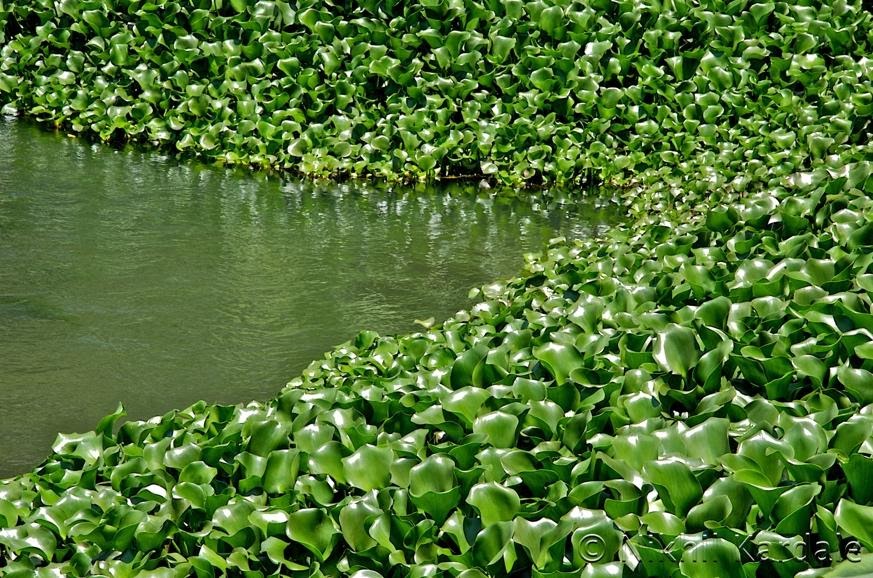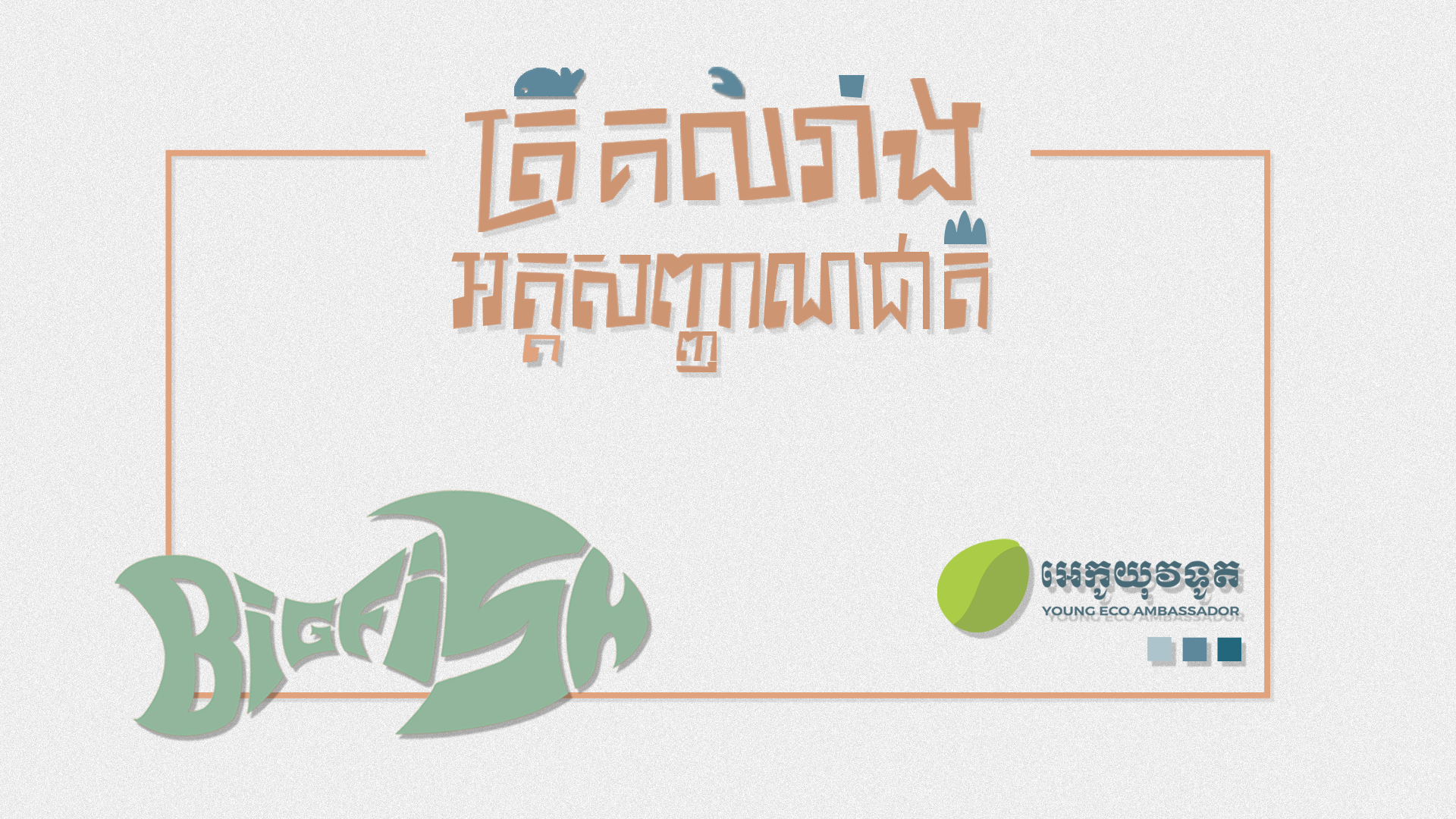Water Hyacinth
Written By: Nuth Pisethrachana, YEA: Mekong Generation 2
Publication Date: 01 March 2021
Translated and Authorized By: Young Eco Ambassador
Just Because They Are Floating Everywhere Doesn’t Mean They’re Useless! Water Hyacinth.
We are talking about the green plants that are always seen floating at various water systems Sometimes it is not necessary to go far, but by the river in front of the palace, we can see it on the river bank. Do you know what it is called? Mostly, in Cambodia, we could see the water hyacinth, which always floats on rivers, streams, lakes, ponds, etc.

Where does water hyacinth originate from?
Normally, we see many water hyacinths flowing through the water, without knowing where they come from and their benefits. According to the Southeast Exotic Pest Plant Council Invasive Plant Manual, Water hyacinth is native to the Amazon River. It is considered invasive throughout the world because it grows rapidly. Water hyacinth can double its size every 12 days, this is why we see more and more of it. On the report of the Global Invasive Species Database, this plant invades up to 50 countries in 5 continents around the world.
People say: “Water hyacinth is useless” Is that true?
As said, water hyacinth is one of the most invasive plants, so where there is water, the water hyacinth exists. Water hyacinth can form thick layers all over the water and become astray if left unmanaged. If so, it can obstruct navigation and block fishing gear such as nets. In addition, these clumps prevent sunlight and oxygen from penetrating underwater plants. On the other hand, it is also a large habitat for mosquitoes and can also carry other bacteria. Therefore, people who live around those areas should find ways to prevent them from clogging up.

Nonetheless, water hyacinth is also useful
In fact, this plant has many benefits when we know how to use it. Every part of it – stems, flowers, leaves, and roots – is useful.
Here are its benefits:
-Young water hyacinth contains up to 20% protein, which we can use as food for chickens, ducks, cattle, and pigs.
-The dead stems, leaves, and roots of it can be brought to use as organic fertilizer. It can also be brought to make compost.
-Stems, leaves, and roots can be used to cover the soil and roots, to help moisturize the soil, prevent weeds from growing, provide cool shade for beneficial insects in the soil.
-If the stems and leaves are dried like straw, they can be used to grow mushrooms.
-If we leave a small amount of water hyacinth in the pond (about a quarter of the pond), its root can provide shelter and food for fish. But we need to frequently take care of it, not to let it grow too much, clean or remove it regularly. Otherwise, it will become a problem that the lack of oxygen can kill all the fish.
-Water hyacinth can absorb impurities and toxins from the water and purify the water when it is in moderation.
-Both stems and leaves can be used as raw materials to produce biogas.


Is there anything else more special about water hyacinth?
Other than the above benefits, people now have the technique to make this type of plant into various items such as bags, mats, baskets, and so on. This helps the livelihood of people along the river bank. The villager starts to make use of the water hyacinth, and sell the items made from it to make a living. Whether on the water or on land, they embarked on this career, and one of the sellers exported his water-hyacinth products to many foreign countries.
The process of making water hyacinth is not easy. The maker must know how to choose the size and original quality (not too young, not too old), must know the techniques from drying, steaming, dyeing, and compilation. In every step, there must be a clear period of time so that the quality of the final product can be recognized and allowed to be imported to other countries.
Presently, there is a handicraft in Phnom Krom by Mrs. So Sambath, where she engages in handcrafting water hyacinth items to support her daily life. A few years ago, she learned the technique from the Japanese, combined with her silk weaving skills in the past. These experiences made her produce the best water-hyacinth item that she can export to Australia and Japan, the countries that have a lot of restrictions on trade. Everyone praises her product, after using it, they said that it is strong, durable, has a unique style and beautiful color, not just beautiful in the picture!


In fact, the water hyacinth provides a lot of advantages
Although this plan obstructs people’s navigation, it does not last long and we can extract it for various purposes. That before, people knew little about the plant and its advantage, so it was useless. But now it’s not anymore. With its rapid growth, people can create various items to make a living.
To sum up, the making of water hyacinth into various items has contributed to the development of livelihood in the Mekong river. Although these plants are found in many different streams, they are all interconnected. The clean-water-water hyacinth can help the livelihood of the people in and around the area. However, if people don’t know the technique of making use of water hyacinth, this plant will become a threat. Even if it is fed to animals, the amount of water hyacinth does not run out, only this processing can reduce the congestion of them on the river. Therefore, we should all support Cambodian eco-friendly products that are made from real nature. Your support helps both the livelihood of the local people and the Mekong River, our source of water. You can find the items in the provinces around the Mekong River and the Tonle Sap Lake. Mrs. So Sambath is one of the sellers where she is located in Phnom Krom village, Siem Reap province, or you can contact her via this number 092 586 503 or 097 602 2425.
“Just Because They Are Floating Everywhere Doesn’t Mean They’re Useless! Water Hyacinth” is one of the three blog articles written by Nuth Pisethrachana, YEA: Mekong Generation 2.
*Youth Program: Mekong Generation2 has been trained by Wapatoa and YEA team.


